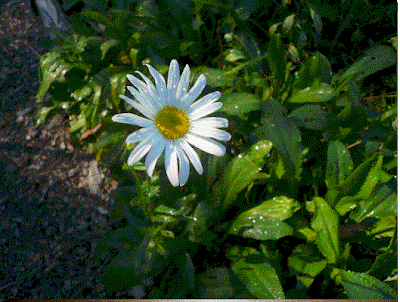Wikipedia
 Echeveria glauca nestling in a dry spot.
Echeveria glauca nestling in a dry spot. I received this one from a garden friend and it didn't have a name attached.
I received this one from a garden friend and it didn't have a name attached.
 Tight buds of Dichorisandra thyrisiflora also called Blue Ginger, wrong name it has nothing in common with Ginger.
Tight buds of Dichorisandra thyrisiflora also called Blue Ginger, wrong name it has nothing in common with Ginger.
 Sugar coating, Aechmea fasciata.
Sugar coating, Aechmea fasciata.
 This shrub has felt like gray leaves and bright yellow Daisy flowers. It does not particularly like to be pruned. It does well in a dry area.
This shrub has felt like gray leaves and bright yellow Daisy flowers. It does not particularly like to be pruned. It does well in a dry area.
 Tibouchina grandiflora. Yes, it's purplish, I agree... with some blue...and a hint of pink...it is my illusion that it is blue and after all it is the 1. of April!
Tibouchina grandiflora. Yes, it's purplish, I agree... with some blue...and a hint of pink...it is my illusion that it is blue and after all it is the 1. of April! The Common Rue (Ruta graveolens), also known as Herb-of-grace, is a species of rue grown as a herb. It is native to southern Europe. It is sometimes grown as an ornamental plant in gardens, especially because of its bluish leaves, and also sometimes for its tolerance of hot and dry soil conditions. It also is grown as both a medicinal herb and as a condiment.
The Common Rue (Ruta graveolens), also known as Herb-of-grace, is a species of rue grown as a herb. It is native to southern Europe. It is sometimes grown as an ornamental plant in gardens, especially because of its bluish leaves, and also sometimes for its tolerance of hot and dry soil conditions. It also is grown as both a medicinal herb and as a condiment.
 The Stitch Plant, Kalanchoe tomentosa, gray, felt like to the touch, must be one of easiest succulents to grow.
The Stitch Plant, Kalanchoe tomentosa, gray, felt like to the touch, must be one of easiest succulents to grow.
 It's not gray and it's not blue, but it was the first daisy to look at "moi"!
It's not gray and it's not blue, but it was the first daisy to look at "moi"!
 Agave tightly plaited.
Agave tightly plaited. Filigree leaves of Grevillia banksii.
Filigree leaves of Grevillia banksii.
 Helichrysum italicum is a flowering plant of the daisy family Asteraceae. It is sometimes called the curry plant because of the strong smell of its leaves. It grows on dry, rocky or sandy ground around the Mediterranean. The stems are woody at the base and can reach 60cm or more in height. The clusters of yellow flowers are produced in Summer, they retain their colour after picking and are used in dried flower arrangements.
Helichrysum italicum is a flowering plant of the daisy family Asteraceae. It is sometimes called the curry plant because of the strong smell of its leaves. It grows on dry, rocky or sandy ground around the Mediterranean. The stems are woody at the base and can reach 60cm or more in height. The clusters of yellow flowers are produced in Summer, they retain their colour after picking and are used in dried flower arrangements.
The plant produces an oil from its blossoms which is used for medicinal purposes. It is anti inflammatory, fungicidal, and astringent. It soothes burns and raw chapped skin. it is used as a fixative in perfumes. It has an intense fragrance.
Believe it or not: A low hedge is easily leaped over. Proverb


5 comments:
Your grays, blues, purples and yes, the white daisy especially, are all lovely!
We had a gray day today with rain pouring down most of the time....and it's still coming down.
We're supposed to have warm sunshine on Sunday though. Yah, spring!
Thanks Kerri, I hope you have lovely spring days ahead and you can plant your fantastic baskets. It needs a lot of dedication and knowhow and yours are really special.
hi there, I found your website while trying to identify a plant for my mother in law. It's definitely the gray one with yellow daisy flowers, do you know the name of it!?
To anonymous: This Daisy shrub is called Euryops pectinatus. I hope this helps.
It does indeed, I'm delighted. Thanks.
Post a Comment